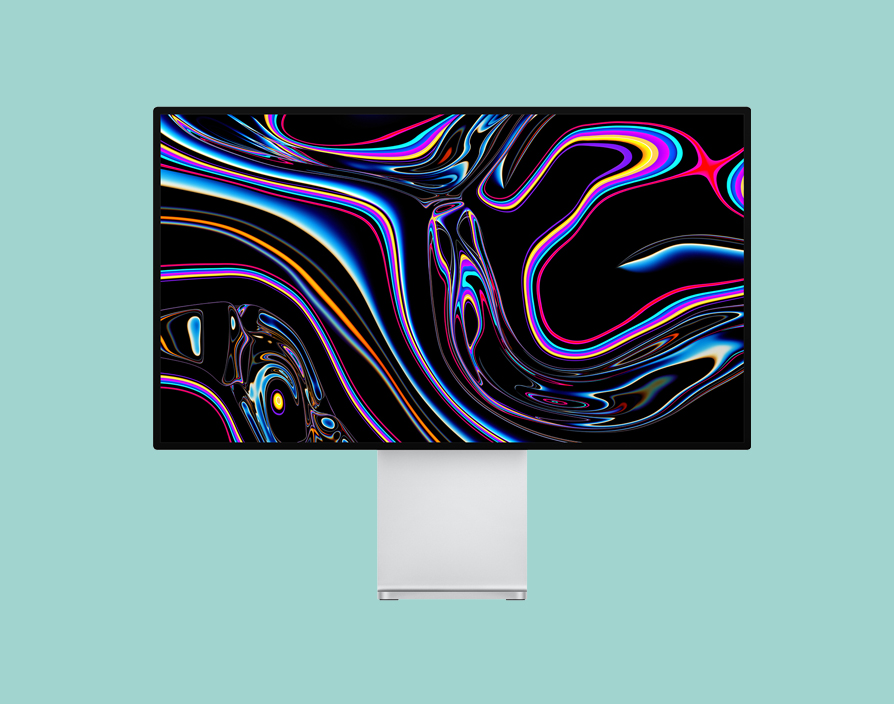Photo credit: Apple
The annual Apple Worldwide Developers Conference (WWDC) is a huge deal. Not only is it the time when the tech titan unveils what it’s been working on and what direction the company is going but also when developers are showcased new shiny tools for creating apps. This year was no different with the top brass at Apple disclosing a smattering of new devices, operative systems and development tools.
So here’s everything that was announced at the WWDC 2019.

Photo credit: Apple
Mac Pro
Let’s talk about the cheese grater-like design of Apple’s latest iteration of the Mac Pro. Why? Well, because the Twitterverse can’t shut up about it.
Once the new computer was announced on the stage of the McEnery Convention Center in San Jose, people were quick to call out the machine’s remarkable similarity with the kitchen appliance. The user unōrsk even went so far as to suggest it should’ve just been called the iGrater whilst user shehasnophile said it reminded her of her foot file. Nick Chapsas, senior software engineer at fintech startup Checkout.com summed up the overall feeling with the words: “I can honestly say that this Mac Pro is grater than any other Apple product.”
However, looking past the design, the new Mac Pro is packed with features that makes it an impressive update from the last 2013 version. The computer is particularly aimed at professionals in need of some serious processing power. “We designed Mac Pro for users who require a modular system with extreme performance, expansion and configurability,” said Phil Schiller, senior vice president of worldwide marketing at Apple. “With its powerful Xeon processors, massive memory capacity, groundbreaking GPU architecture, PCIe expansion, Afterburner accelerator card and jaw-dropping design, the new Mac Pro is a monster that will enable pros to do their life’s best work.”
Let’s break down some of the features, shall we? To begin with, the new computer comes complete with the aforementioned Xeon processors with up to 28 cores as well as 64 PCI Express lanes for tremendous performance and massive bandwidth. This will no doubt come in handy in the next few years as 5G is rolled out across the Britain.
Tech startup founders and their employees often find themselves dealing with tremendous amounts of data sets and projects which require massive memory capabilities. Apple promises to meet this demand with the Mac Pro. Not only does the basic version of the computer start with a six-channel memory architecture and 12 physical DIMM slots enabling it to tackle 1.5 terabytes of memory, it also offers users the opportunity to customise and add more memory through eight PCI Express expansion slots.
The computer starts with the powerful Radeon Pro 580X graphics card and the new Apple Afterburner accelerator card. This means video and graphics professionals should be able to perform some truly herculean feats with this device.
Talking about stunning features, the new 32-inch Apple Pro Display XDR is Apple’s biggest Retina display yet. While the size is impressive, it’s not as big as some of the other displays out there. For instance, the Samsung Ultra-Wide CJ890 is 49-inches diagonally. However, while the Samsung device only manages a still with 3840×1080 resolution, the Pro Display XDR offers a 6016×3384 Retina 6K resolution with more than 20 million pixels. “Pro Display XDR is the world’s best pro display and the perfect companion to the all-new Mac Pro,” said Schiller. “With Retina 6K resolution, gorgeous colour, extreme brightness and contrast ratio and a highly functional design, Pro Display XDR delivers the most comprehensive set of features ever offered on any display at this price point.”
The screen can also be flipped sideways giving a 360 degree access so that you can more easily work in vertical views. For people developing apps for phones, this is surely going to be handy.
Both devices will be available to order this fall with a starting price of $5,999 for the Mac Pro and $4,999 for the Pro Display XDR. Apple also announced the Pro Stand onto which to attach the display would cost $999. And it’s safe to say the new computer certainly seems like it would be a grate addition to any office.

Photo credit: Apple
macOS Catalina
Even before the event kicked off the rumour that Apple was deleting iTunes had spread like wildfire across the web. During the WWDC 2019 keynote Apple explained that this will happen through its new operating system macOS Catalina.
iTunes will be replaced by the Apple Podcasts, Apple TV and Apple Music apps, which is where people will be able to find their music library moving forward. Apple promises that users can easily update their media in any of these apps and, as soon as they plug in their devices, they can find them in the Finder sidebar and update, backup or restore them from there.
Another interesting feature in the new operative system is the Sidecar function. This will enable anyone with an iPad or iPhone to use them as second screens. For creative professionals, the Sidecar feature also enables them to draw on their tablets with an Apple Pencil and see the results on a big screen. Both iOS and the new iPadOS operative systems will be available with voice control.
The macOS Catalina also has some beefed up cybersecurity and privacy features that checks all apps for known security issues, while new data protections require all apps to get permission before accessing user documents. Moreover, the new Find My app enables users to find their computers even when they’re asleep and devices with the T2 Security Chip support Activation Lock to make them less attractive for thieves.
For employers worrying about workers spending too much time in front of their devices, all Mac users can more easily control their usage through the Screen Time app. This will enable them to see how much time they spend in different apps and websites and even set time limits for their usage.
Commenting on the new operative system, Craig Federighi, senior vice president of software engineering at Apple and the guy who failed to use FaceID on stage at a 2017 event, said: “Users will appreciate how they can expand their workspace with Sidecar, enabling new ways of interacting with Mac apps using iPad and Apple Pencil. And with new developer technologies, users will see more great third-party apps arrive on the Mac this fall.”
macOS Catalina will be available as a free software update to all users this autumn but Apple Developer Program members can already access a developer preview and public beta version will be available later in June.

Photo credit: Apple
iOS 13
Caring for users’ privacy has become a huge selling point for Apple. This was evident when you look at some of the features of the new iPhone operative system.
iOS 13 introduces new ways to more easily sign into apps and websites. Instead of using email addresses or filling out authentication codes, they can simply use their Apple ID, with the Californian company pledging to protect their privacy by creating a unique random ID. Moreover, even when services do require emails, iOS 13 can create a random email address. Helping users to avoid oversharing is seemingly caring.
Similar concerns for users’ privacy can be spotted in the updated Maps feature. Not only did Apple drive across the US to update the app but pledges to deliver it while protecting people’s privacy in the process. The new maps experience is already available across select US cities and states. It will roll out across the US by the end of 2019 and to more countries in 2020.
Dark Mode is another addition which will provide a dark colour scheme across all native apps to improve the experience in low-light environments. This feature will also be available for third-party developers so they can easily integrate it into their own services and will also be available on iPads.
iOS 13 also introduces new features for HomePod and AirPods. For instance, the former will be able to distinguish between different voices and can receive messages and phone calls. Similarly, AirPod users will, once the update has dropped, have Siri read incoming messages and, if you want to share that new Tove Lo song with your friends, you can both listen to the same track at the same with your own AirPods.
Among other things, the iOS13 comes with updated photo editing tools, a new look for reminders, a new voice for Siri, faster Face ID unlock and much more. The update will be available for the public this autumn.

Photo credit: Apple
iPadOS
Just like the iOS 13, iPadOS will enable Dark Mode. But that’s not the only new feature.
For starters, the new bespoke iPad operative system has a new home screen. Compared to previous versions, this one will enable more apps on each page and the opportunity to pin widgets to the main screen.
Another update is the option to watch several documents from the same or different apps at the same time. This split screen option combined with the new Slide Over function means it’s now easier to maintain a fast workflow.
Other updates include more ways to use the Apple Pencil, managing documents via the Files app, better text editing and more powerful internet browsing.
“iPad transforms how people work and express their creativity and with iPadOS, we’re taking it even further by delivering exciting capabilities that take advantage of its large canvas and versatility,” said Federighi.
Just like with most updates and product announcements at the WWDC 2019, iPadOS is already available for developers with a public beta version being released later in June whilst the public can expect the free update this autumn.

Photo credit: Apple
tv OS 13
Apple announced Apple TV+ back in March 2019. Unsurprisingly, the WWDC saw the Cupertino-based company unveil its new Apple TV 4K operative system.
tvOS 13 will provide users with a new home screen where people can watch video reviews. Additionally, the operative system will support multiple users to get a personalised experience depending on their taste and will also enable access to Apple Arcade this autumn.

Photo credit: Apple
watchOS 6
Women have long been under-catered to when it comes to technology. But over the past few years more companies have tried to turn the tide. For instance, in 2018 Fibit launched the Fitbit Versa fitness tracker, its first watch created for women and people with smaller wrists. Now Apple is taking additional steps to ensure women’s needs are met, starting with the Apple Watch’s new operating system.
Having already put the focus on health and fitness with the launch of the Apple Watch Series 4, the watchOS 6 operative system doubles down on this commitment by enabling women to keep better track of their menstrual cycles. The new Cycle Tracking feature will also be available via the Health app on iPhones.
Other health-related features include the measuring sound levels to avoid damage to the user’s hearing and to better track their fitness progress.
Another new feature is that Apple Watch users can get access to the App Store via their wearable devices for the first time. This means they can install new third-party apps, which opens opportunities for developers to create Apple Watch-only applications.
Developers interested in this opportunity can already get access to a watchOS 6 preview. The rest of us have to wait for the free update this autumn.

Photo credit: Apple
App developers get more tools
The WWDC 2019 wouldn’t be much of a developer conference if Apple failed to announce any new developer tools. And it’s safe to say that Tim Cook and his team delivered a slew of new solutions.
Let’s start with SwiftUI. The new development framework provides an easy platform to build apps with its easy-to-understand declarative code and saves developers time by providing a huge amount of automatic functionality like interface layout, Dark Mode, right-to-left language support and internationalisation.
The new tools will also make it easier to bring iPad apps to Mac. Instead of having to rewrite a lot a code, developers simply have to tick a box to automate the process.
For most people, augmented reality (AR) was something they only heard of when the Pokémon Go craze swept the world back in 2016. Since then, AR has not only seen the launch of other video games but has also been used in retail. In other words, the technology is a big thing.
No wonder then that Apple is empowering developers to take advantage of this opportunity with the new ARKit 3. The new tool will give developers the chance to integrate users’ movements into their app, opening the doors for green screen-like apps.
Along the same vein, the Reality Composer, a new app for iOS, iPadOS and Mac, lets developers easily prototype and produce AR experiences with no prior 3D experience with a simple drag-and-drop interface. Reality Composer also gives the access to a library of 3D objects and animations.
Other new tools include ways to create apps for Apple Watch, new ways to utilise Apple Pencil, Siri and Maps.
Federighi stated: “The new app development technologies unveiled today make app development faster, easier and more fun for developers and represent the future of app creation across all Apple platforms. SwiftUI truly transforms user interface creation by automating large portions of the process and providing real-time previews of how UI code looks and behaves in-app. We think developers are going to love it.”
That’s everything that was announced at the WWDC 2019 and we’re looking forward to see how these updates and devices are welcomed by the market this autumn. ![]()
Share via:



















































